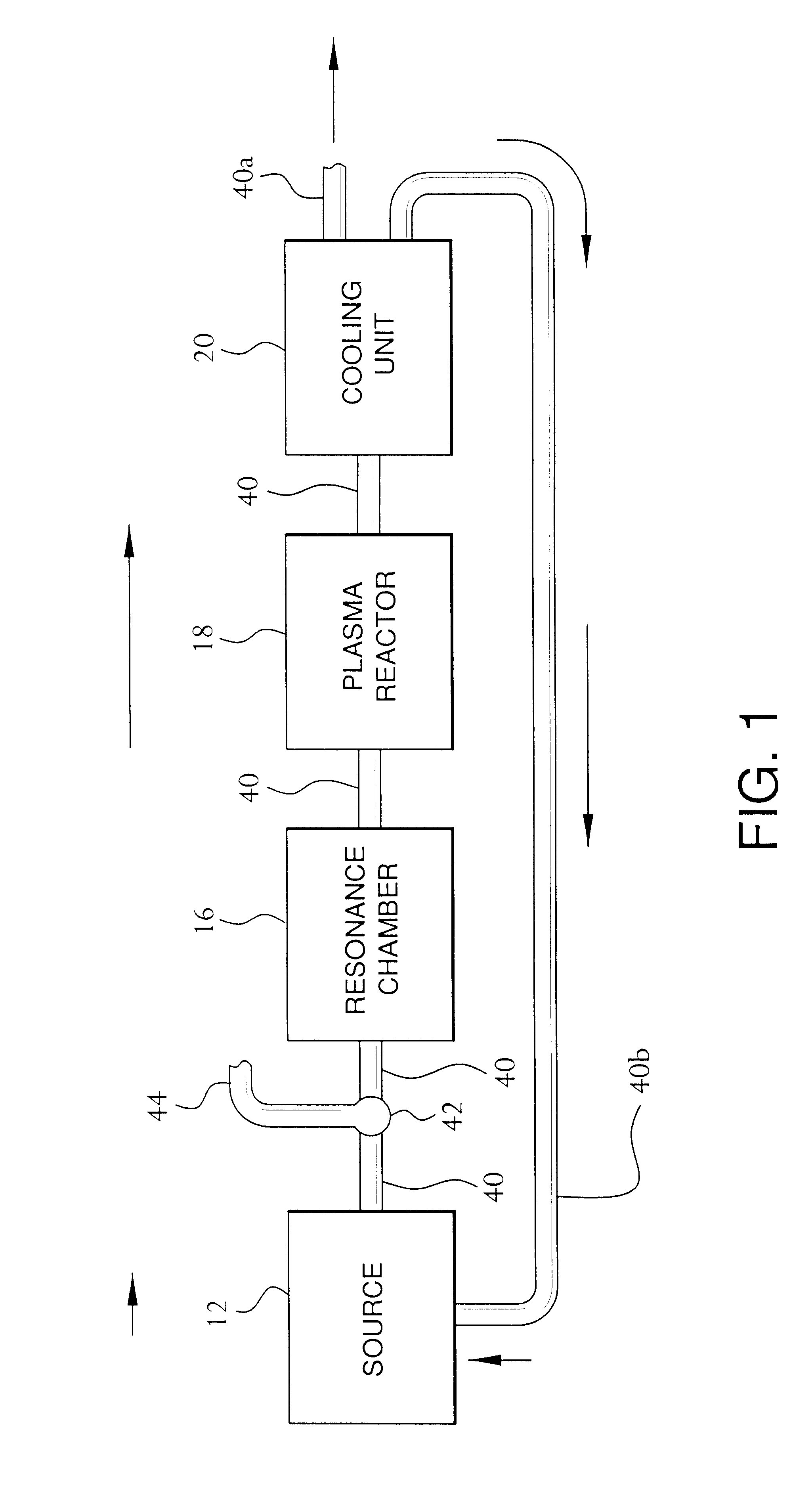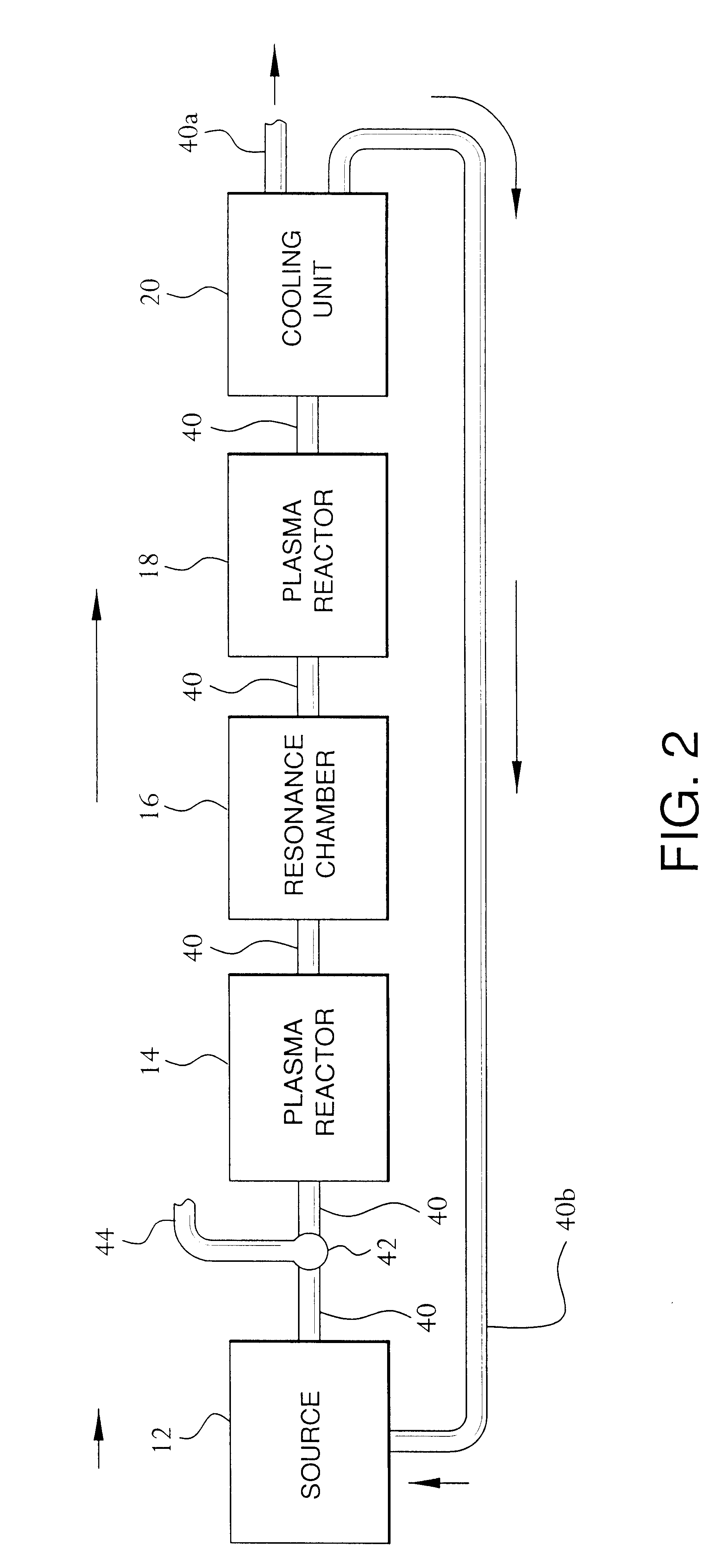Pollution control device
a technology of pollution control and control device, which is applied in the direction of dispersed particle separation, energy-based chemical/physical/physicochemical processes, and separation processes, etc., can solve the problems of reducing the efficiency of the devi
- Summary
- Abstract
- Description
- Claims
- Application Information
AI Technical Summary
Problems solved by technology
Method used
Image
Examples
example ii
In a second example, a test was conducted by an independent lab that performs emission certification testing in accordance with EPA methods. The exhaust of a 40 horse power diesel generator was coupled to the pollution control device described above.
The results indicated a reduction in flow rate from 241 ACFM (actual cubic feet per minute) to 155 ACFM, O.sub.2 as a percentage of the total effluent emission stream increased after the process, a reduced CO.sub.2 percentage level from 2.15% to 1.04% of the effluent volume, a reduced CO level from 286 ppmV to 156 ppmV and 0.29 lb / hr to 0.10 lb / hr (65.5%), and a reduced NO.sub.x levels from 238 ppmV to 78 ppmV and 0.40 lb / hr to 0.09 lb / hr (77.5%). SO.sub.x levels changes were negligible due to the trace amounts of sulfur in the diesel fuel.
example iii
In a third example, the exhaust of a forty horse power diesel generator was coupled to the pollution control device described above. A test was performed in house using standard testing techniques. The aforementioned blower included a variable speed fan and was used to insure the CFM velocity of the effluent gas through the pollution control device equaled the base-line CFM of the untreated emissions.
The results indicated slight increases in O.sub.2 percentage levels, a 50% decrease in CO.sub.2 percentage levels from 2% to 1% of the effluent volume, a 64% decrease in CO levels from 278 ppmV to 100 ppmV, a 28% decrease in SO.sub.2 levels from 464 ppmV to 332 ppmV, a 72% decrease in NO levels from 170 ppmV to 48 ppmV, and an 86% decrease in NO.sub.x levels from 150 ppmV to 20 ppmV.
example iv
In a fourth example, a test was conducted by an independent lab that performs emission certification testing in accordance with EPA methods. The exhaust of a coal-fired incinerator was coupled to the pollution control device described above. The aforementioned blower included a variable speed fan and was used to insure the CFM velocity of the effluent gas through the pollution control device equaled the base-line CFM of the untreated emissions.
The NO.sub.x and SO.sub.x levels were monitored. The results indicated reductions in SO.sub.2 levels from 205 ppmV to 51 ppmV and 0.19 lb / hr to 0.06 lb / hr (68.4%), and reduced NO.sub.x levels from 68 ppmV to 31 ppmV and 0.05 lb / hr to 0.02 lb / hr (60.0%).
PUM
 Login to View More
Login to View More Abstract
Description
Claims
Application Information
 Login to View More
Login to View More - R&D
- Intellectual Property
- Life Sciences
- Materials
- Tech Scout
- Unparalleled Data Quality
- Higher Quality Content
- 60% Fewer Hallucinations
Browse by: Latest US Patents, China's latest patents, Technical Efficacy Thesaurus, Application Domain, Technology Topic, Popular Technical Reports.
© 2025 PatSnap. All rights reserved.Legal|Privacy policy|Modern Slavery Act Transparency Statement|Sitemap|About US| Contact US: help@patsnap.com



